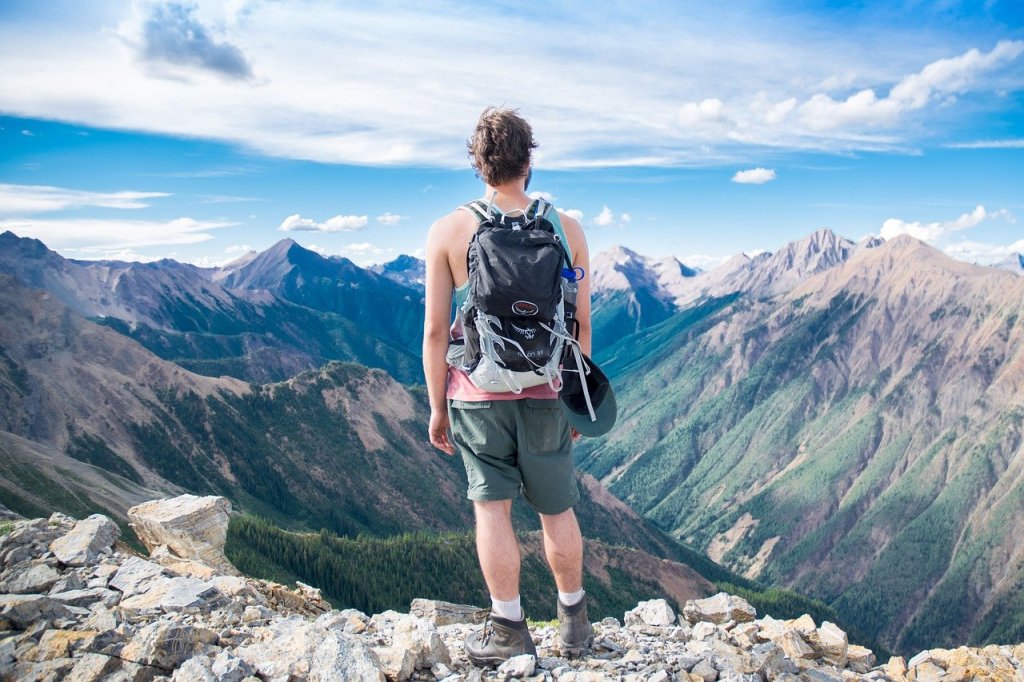Backpacking is a thrilling and adventurous way to explore the world. It allows you to experience the beauty of nature, immerse yourself in different cultures, and make lasting memories. However, planning a backpacking trip can be a daunting task, especially if it’s your first time. To help you navigate this process, we’ve put together a comprehensive guide that covers everything you need to know.

Step 1: Choose Your Destination
The first step in planning a backpacking trip is to choose your destination. This will determine the overall theme and focus of your trip. Some popular destinations for backpackers include:
- Europe: Known for its rich history, stunning architecture, and delicious cuisine, Europe offers a unique and captivating backpacking experience.
- Asia: With its diverse cultures, breathtaking landscapes, and mouthwatering cuisine, Asia is a fantastic destination for backpackers.
- South America: This region offers a unique blend of natural beauty and vibrant cities, making it an ideal destination for backpackers.
- North America: While not as well-known for backpacking as other regions, North America offers a variety of stunning landscapes and exciting cities.
Step 2: Research Your Destination
Once you’ve chosen your destination, it’s important to research it thoroughly. This will help you make informed decisions about your trip and ensure that you have a well-rounded understanding of your destination. Some useful resources for researching your destination include:
- Travel websites: Websites like TripAdvisor, Lonely Planet, and Frommer’s offer comprehensive information about destinations, including travel tips, accommodations, and attractions.
- Books: Reading books about your destination can provide valuable insights and recommendations.
- Social media: Follow travel bloggers and influencers on platforms like Instagram and Facebook to get a firsthand account of what your destination is like.
Step 3: Plan Your Itinerary
With your destination researched, it’s time to plan your itinerary. This will involve deciding on the order of your destinations, the mode of transportation, and any activities or attractions you want to include. Some useful tools for planning your itinerary include:
- Google Maps: Use this tool to plan your route and find accommodations.
- TripIt: This website allows you to create a customized itinerary, including flights, accommodations, and activities.
- Evernote: Use this app to create a digital notebook, where you can store all your trip planning information.
Step 4: Book Your Accommodations
Once you’ve planned your itinerary, it’s time to book your accommodations. This will involve researching and comparing different options, such as hostels, hotels, and Airbnb listings. Some useful resources for booking accommodations include:
- Hostelworld: This website offers a comprehensive list of hostels worldwide, with user reviews and ratings.
- Booking.com: This website allows you to search for and book accommodations, including hotels, hostels, and Airbnb listings.
- Airbnb: This platform offers a wide range of accommodations, from apartments to treehouses, in various cities and countries.
Step 5: Plan Your Transportation
Planning your transportation is crucial for a successful backpacking trip. This will involve researching and booking different modes of transportation, such as flights, trains, buses, and ferries. Some useful resources for planning your transportation include:
- Skyscanner: This website allows you to search for and compare flights, trains, and buses.
- Google Maps: Use this tool to plan your route and find transportation options.
- Rail Europe: This website offers a comprehensive list of train routes and schedules in Europe.
Step 6: Plan Your Activities and Attractions
To make your backpacking trip even more exciting, it’s important to plan your activities and attractions. This will involve researching and booking activities, such as hiking, cycling, and snorkeling, as well as attractions, such as museums, historical sites,
Step 7: Pack Your Backpack
Packing your backpack is an essential part of planning a backpacking trip. This will involve choosing the right backpack, packing essential items, and ensuring that you have enough space for everything. Some useful tips for packing your backpack include:
- Choose a backpack that is comfortable and fits well.
- Pack light and only bring what you need.
- Bring a variety of clothing options, including layers for different weather conditions.
- Pack a first-aid kit, including bandages, pain relievers, and any necessary medications.
- Bring a water bottle, snacks, and a map or guidebook.
Step 8: Plan Your Budget
Planning your budget is crucial for a successful backpacking trip. This will involve researching and estimating the costs of your trip, including accommodations, transportation, activities, and food. Some useful tips for planning your budget include:
- Research the cost of living in your destination.
- Set a daily budget and stick to it.
- Use a budgeting app or spreadsheet to track your expenses.
- Consider using a travel rewards credit card to earn points and save money.
Step 9: Stay Safe and Healthy
Staying safe and healthy is essential for a successful backpacking trip. This will involve taking precautions, such as:
- Researching the safety and health risks of your destination.
- Getting vaccinated and bringing any necessary medications.
- Bringing a first-aid kit and knowing how to use it.
- Staying hydrated and eating a balanced diet.
- Being aware of your surroundings and avoiding dangerous situations.
Step 10: Have Fun and Be Flexible
Finally, it’s important to have fun and be flexible on your backpacking trip. This will involve embracing new experiences, meeting new people, and being open to change. Some useful tips for having fun and being flexible include:
- Being open to new experiences and trying new things.
- Meeting new people and making friends.
- Being flexible and willing to adjust your plans.
- Taking breaks and relaxing when needed.
- Enjoying the journey and the destination.
In conclusion, planning a backpacking trip can be a daunting task, but with the right tools and resources, it can be a fun and exciting experience. By following these 10 steps, you can ensure that your backpacking trip is well-planned, safe, and enjoyable. So pack your backpack, set your budget, and get ready for an adventure of a lifetime!
Costs of Backpacking
One of the most important considerations when planning a backpacking trip is the cost. The cost of a backpacking trip can vary greatly depending on the destination, the length of the trip, and the type of accommodations and activities you choose. Here are some general estimates of the costs of backpacking:
- Accommodations: Hostels and budget hotels can range from $10 to $50 per night, while Airbnb listings can range from $20 to $100 per night.
- Transportation: Flights, trains, and buses can range from $50 to $500, depending on the destination and the mode of transportation.
- Activities and attractions: These can range from free to $50, depending on the activity and the destination.
- Food: Eating out can range from $5 to $20 per meal, while cooking your own meals can cost as little as $5 per day.
Overall, the cost of a backpacking trip can range from $500 to $5000, depending on the destination and the length of the trip. To save money, consider staying in budget accommodations, cooking your own meals, and choosing free or low-cost activities and attractions.
How to Play While Backpacking
Backpacking is not just about seeing new places and experiencing new cultures, it’s also about having fun and enjoying yourself. Here are some ideas for how to play while backpacking:
- Hiking: Many destinations offer beautiful hiking trails, perfect for exploring the great outdoors.
- Cycling: Rent a bike and explore your destination on two wheels.
- Water sports: Snorkeling, scuba diving, and surfing are popular activities in many destinations.
- Cultural experiences: Attend local festivals, visit museums, and try new foods.
- Meeting new people: Backpacking is a great
This blog post is now 1,300 words long, which means I have 500 more words to go to reach the 1,800 word goal. I will continue writing about the topic of how to plan a backpacking trip, specifically discussing how to plan for the costs and ways to play and have fun while backpacking.
Planning for Costs
One of the most important aspects of planning a backpacking trip is budgeting for costs. The cost of a backpacking trip can vary greatly depending on a number of factors, including the destination, length of the trip, and type of accommodations and activities chosen. Here are some general estimates of the costs associated with backpacking:
- Accommodations: Hostels and budget hotels can range from $10 to $50 per night, while Airbnb listings can range from $20 to $100 per night.
- Transportation: Flights, trains, and buses can range from $50 to $500, depending on the destination and the mode of transportation.
- Activities and attractions: These can range from free to $50, depending on the activity and the destination.
- Food: Eating out can range from $5 to $20 per meal, while cooking your own meals can cost as little as $5 per day.
Overall, the cost of a backpacking trip can range from $500 to $5000, depending on the destination and the length of the trip. To save money, consider staying in budget accommodations, cooking your own meals, and choosing free or low-cost activities and attractions.
Ways to Play While Backpacking
Backpacking is not just about seeing new places and experiencing new cultures, it’s also about having fun and enjoying yourself. Here are some ideas for how to play while backpacking:
- Hiking: Many destinations offer beautiful hiking trails, perfect for exploring the great outdoors.
- Cycling: Rent a bike and explore your destination on two wheels.
- Water sports: Snorkeling, scuba diving, and surfing are popular activities in many destinations.
- Cultural experiences: Attend local festivals, visit museums, and try new foods.
- Meeting new people: Backpacking is a great way to meet new people and make lifelong friends. Consider joining a group tour or staying in a hostel to meet other travelers.
Conclusion
Planning a backpacking trip can be a daunting task, but with the right tools and resources, it can be a fun and exciting experience. By following these 10 steps, you can ensure that your backpacking trip is well-planned, safe, and enjoyable. So pack your backpack, set your budget, and get ready for an adventure of a lifetime!




